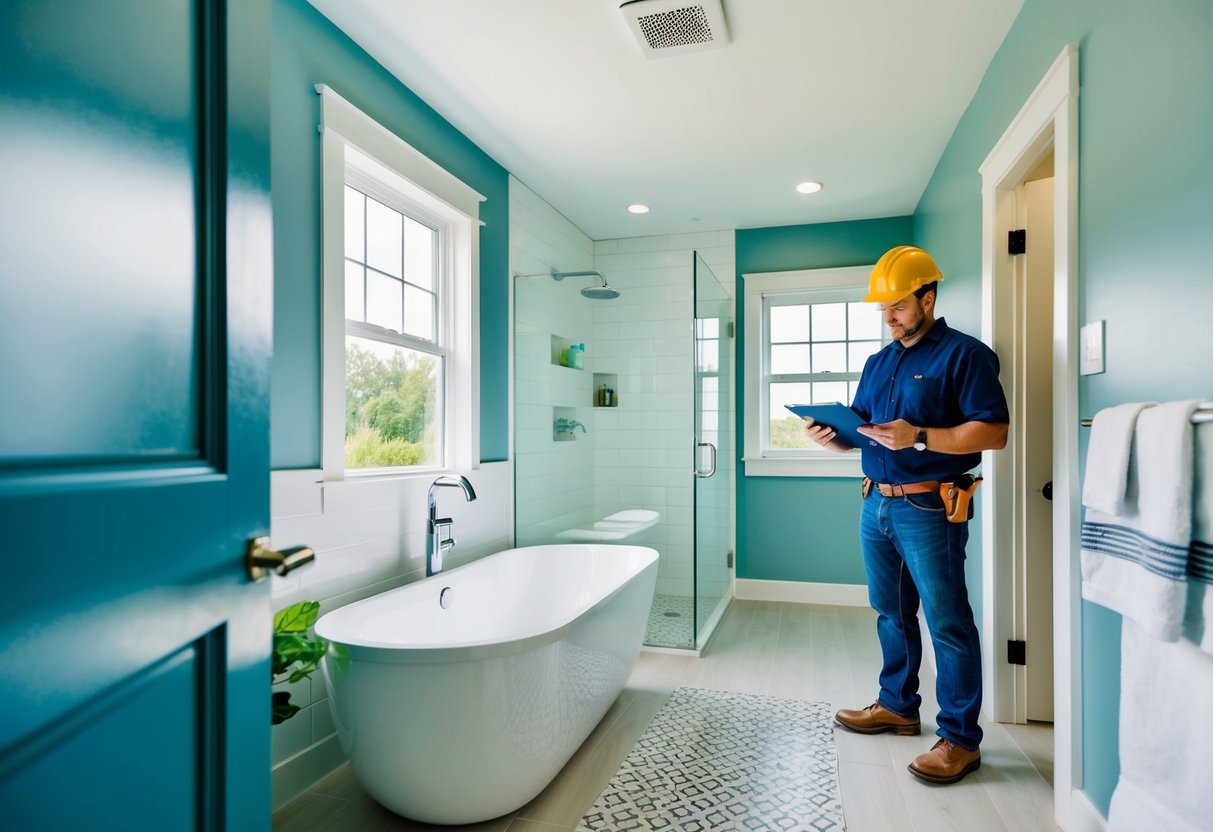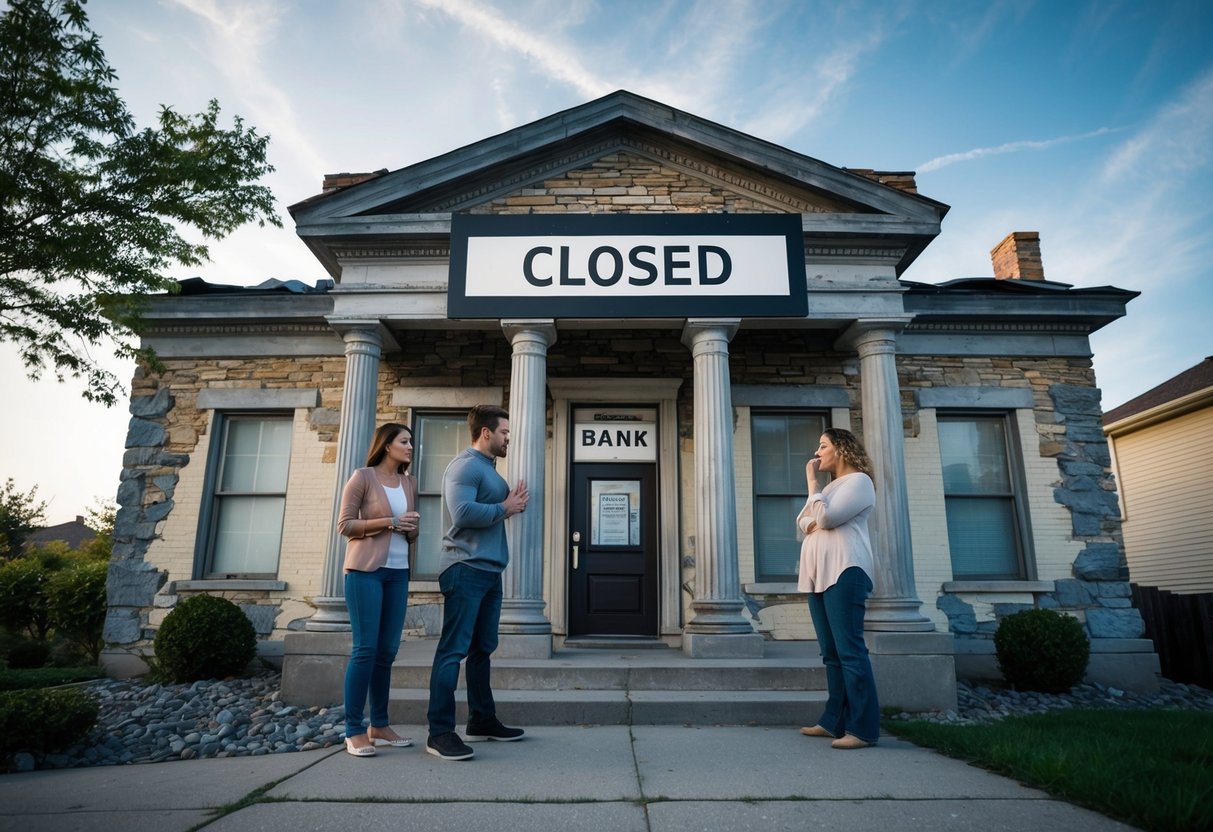Thinking about restumping your home? You’re likely wondering about the costs involved. Restumping your house can cost between $5,000 and $30,000, depending on various factors. This investment ensures your home’s foundation is strong and secure, which is crucial for the safety and longevity of your property.

Several factors can affect the cost of restumping, including the number of stumps, the condition of the soil, and the materials used. Homeowners in Australia often face a range of quotes, with costs per stump typically ranging from $500 to $700. Understanding these elements can help you budget more accurately and avoid unexpected expenses.
It’s important to consider whether you will hire professionals or attempt a DIY approach. Hiring licensed professionals might be more expensive initially, but it often saves money in the long run by preventing costly mistakes. Restumping is a significant home improvement project, and making informed decisions can ensure the best outcome for your investment.
Key Takeaways
- Restumping costs range from $5,000 to $30,000.
- Factors like stump numbers and materials influence costs.
- Hiring professionals can save money long-term.
Understanding Restumping

Restumping, also known as reblocking, is crucial for maintaining the structural integrity and safety of your home. It involves replacing old, damaged stumps with new ones to stabilise the house effectively.
What Is Restumping?
Restumping means replacing the existing stumps that support your home. These stumps can be made of timber, concrete, or steel. Over time, they may rot, become infested with termites, or deteriorate.
During the restumping process, your house is raised using jacks. Old stumps are removed and new ones are installed. This ensures the structure remains level and stable, preventing issues like uneven floors and wall cracks.
When Is Restumping Necessary?
Restumping becomes necessary when the stumps no longer provide adequate support. Termite damage, wood rot, and soil movement are common reasons for deterioration.
Signs you might need restumping include cracked walls, doors that don’t close properly, and sloping or uneven floors. Regular inspections can help spot these issues before they become severe.
Different Types of Stumps
Various types of stumps are used in restumping: timber, concrete, and steel. Timber stumps, often made from durable wood like hardwood, are traditional but susceptible to rot and termites.
Concrete stumps are a popular modern choice due to their durability and resistance to pests. Steel stumps offer the highest strength and longevity but can be more expensive.
Signs Your House Needs Restumping
Several signs indicate your home might need restumping. Look for uneven or sloping floors, which can mean the stumps are failing. Cracks in plaster walls or exterior brickwork also suggest a problem.
Doors and windows that stick or don’t close properly can be another sign. Regular checks for these issues can prevent more serious structural problems from developing.
Factors Influencing Restumping Costs

Various factors can significantly impact the cost of restumping your home. These include the types of materials used, the house’s size and structure, soil conditions, necessary repairs, and considerations for permits and insurance.
Material Choices and Their Costs
The type of material used for stumps plays a major role in determining costs.
- Timber stumps: Typically, these are the least expensive option but may not have the same durability as other materials.
- Concrete stumps: A mid-range option that balances cost and durability.
- Steel stumps: The most expensive but also the most durable and strong, with prices ranging from $35 to $62 each.
Each material choice affects not just the initial costs but also the longevity and maintenance required.
Size and Structure of the House
The size of the house heavily influences the number of stumps needed for the foundation.
- Larger homes require more stumps, which increases costs.
- Complex structures with multiple levels or unique architectural designs also add to the expense.
- The existing foundation’s condition plays a crucial role. If the foundation is in poor shape, it will likely cost more to restump.
In contrast, smaller or simpler homes will be more affordable to restump.
Soil Conditions and Accessibility
The soil condition under your home impacts the ease and cost of the restumping process.
- Hard or rocky soil makes the job more challenging and time-consuming.
- Soft or unstable soil may require additional stabilisation efforts, increasing both labour and material costs.
Accessibility to the work site is another critical factor. If the property is hard to access or if there are obstacles, expect higher costs due to increased labour and specialised equipment needs.
Additional Repairs and Precautions
When restumping, you might discover structural damage or other issues that need fixing.
- Repairing damaged beams or floors adds to the overall cost.
- Waterproofing and termite treatments are often necessary precautions during restumping.
- Sometimes, existing utilities (e.g., plumbing or electrical systems) might need adjustments, which also increases costs.
It’s essential to budget for these potential extras when planning your restumping project.
Permits and Insurance Considerations
In many cases, you’ll need certain permits to legally carry out restumping work.
- Permit prices vary by region but are a crucial part of the cost.
- Missing permits lead to fines or construction delays, adding to the expense.
Insurance might also be necessary to protect your investment.
- Restumping changes the structure of your home, and you may need to update your home insurance policy.
- Some insurers might offer specific policies for homes undergoing major renovation like restumping.
Planning for these administrative costs is vital for a smooth restumping process.
Average Costs and Budgeting

Restumping your home can be a significant investment, and understanding the costs involved is crucial for effective budgeting. This includes estimating the price, planning your budget, and considering financing options.
Cost Estimation for Restumping
The cost of restumping a house in Australia can vary widely. For an average-sized home, prices generally range from $5,000 to $20,000.
The cost per stump usually falls between $500 and $700, though this can change based on the materials used and the complexity of the job. Labour costs are another factor, often making up a significant part of the total expense.
It may also be necessary to budget for additional repairs to doors, windows, or floors that can arise during the project.
Budget Planning for Homeowners
Effective budget planning starts with getting detailed quotes from several reputable contractors. Factor in both the best and worst-case scenarios to avoid unexpected financial strain.
Create a budget that covers not only the restumping costs but also any potential additional repairs.
Here is a basic budget checklist:
- Restumping Cost: $5,000 – $20,000
- Cost Per Stump: $500 – $700
- Additional Repairs: $500 – $5,000
Including a contingency fund can also provide a safety net for unexpected expenses.
Financing and Payment Options
Financing restumping can be challenging, but several options are available. Personal loans are a common choice and can provide the necessary funds upfront.
Refinancing your mortgage is another option, allowing you to spread the cost over a longer period. Some homeowners may consider obtaining a home equity loan if they have significant equity built up.
Comparing interest rates and terms is important to find the best deal. Discuss these options with your financial advisor to determine what fits your situation best.
The Restumping Process
Restumping your house involves several steps, from inspection and assessment to post-restumping tasks. It’s crucial to work with experienced professionals to ensure your home’s stability.
Inspection and Assessment
The process starts with a detailed inspection of your home’s current stumps. Professionals assess the soil conditions, the type of stumps used, and any structural issues. They check for signs like uneven floors, cracked walls, or doors that won’t close properly. These signs often indicate that the stumps are failing.
During the assessment, experts determine which stumps need replacement and the overall stability of the house. You need a thorough examination to understand the extent of deterioration and the specific requirements for your home.
Choosing the Right Restumping Contractor
Selecting an experienced restumping contractor is critical. Look for contractors with proven expertise and good reviews. Ask for quotes from multiple house restumping contractors to compare services and prices.
Ensure the contractor uses quality materials and complies with local building codes. Check their previous work and ask for references. A professional contractor will provide a detailed plan and explain the process clearly, ensuring you understand each step involved.
Steps in the Restumping Procedure
- Preparation: Clear the area around the house to allow for easy access.
- Jack Up the House: Specialised jacks lift and support your home to replace the stumps.
- Remove Old Stumps: Old stumps are carefully removed to avoid damaging the structure.
- Dig Stump Holes: New holes are dug, considering soil conditions and house design.
- Install New Stumps: The new stumps, often made of steel or treated wood, are placed and secured.
- Adjust and Level: The house is lowered onto the new stumps and levelled correctly.
- Final Inspection: A thorough check ensures all stumps are properly installed and the house is stable.
Post-Restumping Considerations
After restumping, there are several things to keep in mind. Ensure that all areas around the new stumps are tidy and properly refilled. Check for any adjustments needed in your home’s structure due to the new level.
Monitor your house for any new issues that might arise, such as slight settlings. Regular maintenance checks can help address potential problems early. It’s also wise to have a follow-up inspection by professionals to confirm the work’s effectiveness and stability.
Materials and Techniques

When restumping your home, the materials and methods used can significantly affect both the cost and the durability of the project. You have options like timber, concrete, and steel stumps, each with their pros and cons.
Timber, Concrete, and Steel Stump Options
Timber stumps are a traditional choice, often used because they are initially less expensive. However, they are prone to rot and termite damage, especially in moist environments.
Concrete stumps provide good durability and are resistant to termites and rot. They can be more expensive than timber but offer better long-term stability.
Steel stumps, particularly galvanised steel stumps, are the most expensive option but offer superior strength and durability. These stumps are resistant to moisture and pests, making them a reliable choice for long-term use.
Comparing Stump Materials
Durability: Timber is the least durable, prone to rot, and pest damage. Concrete offers better durability against pests and moisture. Steel, especially galvanised, provides the highest durability.
Cost: Timber is the cheapest, costing between $500 and $700 per stump. Concrete is mid-range, while steel is the most expensive, ranging between $35 and $62 per stump.
Maintenance: Timber stumps require regular checks and treatments for pests and rot. Concrete stumps need less maintenance and are more reliable in moist conditions. Steel stumps need minimal upkeep and are very durable.
Installation: Timber is easier and cheaper to install compared to concrete and steel, which require more precision and effort.
Installation Techniques
Traditional method: Involves manually removing old stumps and installing new ones, often requiring heavy lifting and precise alignment.
Hydraulic jacking: Used to lift the house, offering a more controlled and safer installation process. This prevents damage to the structure.
Concrete pour: When installing concrete stumps, a mix is poured into pre-dug holes, ensuring a solid foundation.
Bolting for steel stumps: Steel stumps are often bolted into place, providing a secure and sturdy base. Proper alignment is crucial to ensure stability.
Maintenance and Longevity
Timber stumps: Require regular inspections for termite damage and rot, and treatment with chemicals to prevent deterioration.
Concrete stumps: Minimal maintenance is needed. They are generally resistant to pests and rot but should be checked occasionally for cracks.
Steel stumps: Require very little maintenance but should be inspected for rust, especially in coastal areas.
Proper maintenance extends the lifespan of your stumps, ensuring the foundation remains sturdy for many years.
Potential Challenges and Solutions

When restumping your home, you can face several challenges such as dealing with old and damaged stumps, soil movement, obtaining necessary permissions, and managing project timelines. Below, we’ll cover these issues and their solutions.
Dealing With Old and Damaged Stumps
Old and damaged stumps can deteriorate, leading to uneven flooring and structural issues. Removing these stumps is essential to ensure your home’s safety. Often, existing stump holes need to be cleared and prepared for new stumps.
Using high-quality materials like treated timber or steel for new stumps will increase longevity. It’s advisable to work with experienced tradespeople to avoid further damage.
Soil Movement and Structural Adjustments
Soil movement can lead to significant structural problems. Different soil types, like clay or sandy soil, can shift over time, affecting the stability of your home. Adjusting the structure to account for these movements is critical.
You might need to use engineered solutions, such as flexible connections, to accommodate soil shifts. Consulting a structural engineer can provide you with tailored strategies for your specific soil type and conditions.
Securing the Correct Permissions
Before starting the restumping project, you must secure permissions from your local council. This often requires submitting detailed plans and adhering to building codes. Without these permissions, you could face legal challenges and potential project delays.
Contact your local council early in the planning phase to understand the required paperwork. Hiring a reputable contractor familiar with local regulations can help streamline this process.
Managing Project Timelines and Disruption
Restumping can cause significant disruption to your daily life. The timelines for such projects can vary based on house size, soil conditions, and weather. Managing these aspects effectively is crucial to minimise impact.
Communicate regularly with your contractor to keep the project on track. Scheduling the work during a time when minimal disruption will occur can also help. Be prepared for potential delays and plan accordingly to maintain smooth progress.
Hiring Professionals vs. DIY
When deciding between hiring professionals or undertaking a DIY restumping project, it’s crucial to consider cost, skill level, and safety. There are benefits and risks to each approach that you must weigh.
Pros and Cons of DIY Restumping
Pros:
- Cost Savings: DIY restumping can save you thousands of dollars.
- Learning Opportunity: Offers a chance to learn new skills.
Cons:
- Time-Consuming: The process can be long and demanding.
- Risk of Mistakes: Lack of experience may lead to errors.
- Safety Concerns: Incorrect handling can be hazardous.
- Compliance Issues: May not meet local building regulations.
The Importance of Hiring Experienced Contractors
Professional contractors bring extensive experience to the table. They ensure:
- Structural Integrity: Proper techniques are used for a stable foundation.
- Regulatory Compliance: They adhere to local building codes, which is crucial for safety and future inspections.
- Warranty and Insurance: Most professional services offer warranties and are insured, protecting you from additional costs if issues arise.
Hiring an experienced contractor like those approved by LevelMaster can give you peace of mind knowing that the job is done correctly and safely.
Verifying Credentials and Reviews
Before hiring a contractor, ensure they have the right credentials:
- Licenses and Certifications: Verify that they are licensed and certified for the job.
- Online Reviews and Testimonials: Read reviews on platforms like HIREtrades and others.
- Experience and Expertise: Look for contractors with extensive experience in restumping.
It’s also beneficial to check any affiliations with credible organisations like LevelMaster, as this often indicates a higher level of quality and trustworthiness in their work. Trusting verified professionals reduces risks and can lead to better outcomes for your home restumping project.
Frequently Asked Questions

Restumping a house can involve various costs and considerations. Below are detailed answers to help you understand the process better.
What is the typical cost range for restumping a house in Australia?
The cost to restump an average-sized home in Australia can range from $5,000 to $20,000. This range varies based on factors like the number of stumps required and the complexity of the job.
How much should I budget for restumping a house in Victoria?
In Victoria, budgeting around $10,000 to $30,000 is advisable. Factors such as soil conditions, access to the site, and the size of the house will influence the final cost.
Are the expenses of restumping and raising a home significantly different?
Yes, the expenses for restumping and raising a home can be quite different. Restumping focuses on replacing old stumps, while raising a house involves additional structural work, which can increase costs significantly.
How frequently should a house undergo restumping?
A house typically needs restumping every 20 to 50 years. The exact timing can depend on the type of stumps used initially and the soil condition where the house is located.
Will my house insurance policy cover the costs of restumping?
House insurance policies usually do not cover the costs of restumping. It’s essential to check with your insurer to understand what is covered under your specific policy.
What factors should be considered to determine if restumping a house is worthwhile?
Consider the overall condition of the house, the cost of the restumping process, and the potential increase in property value. You should also think about your long-term plans for the property and the urgency of any structural issues.








